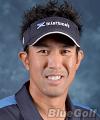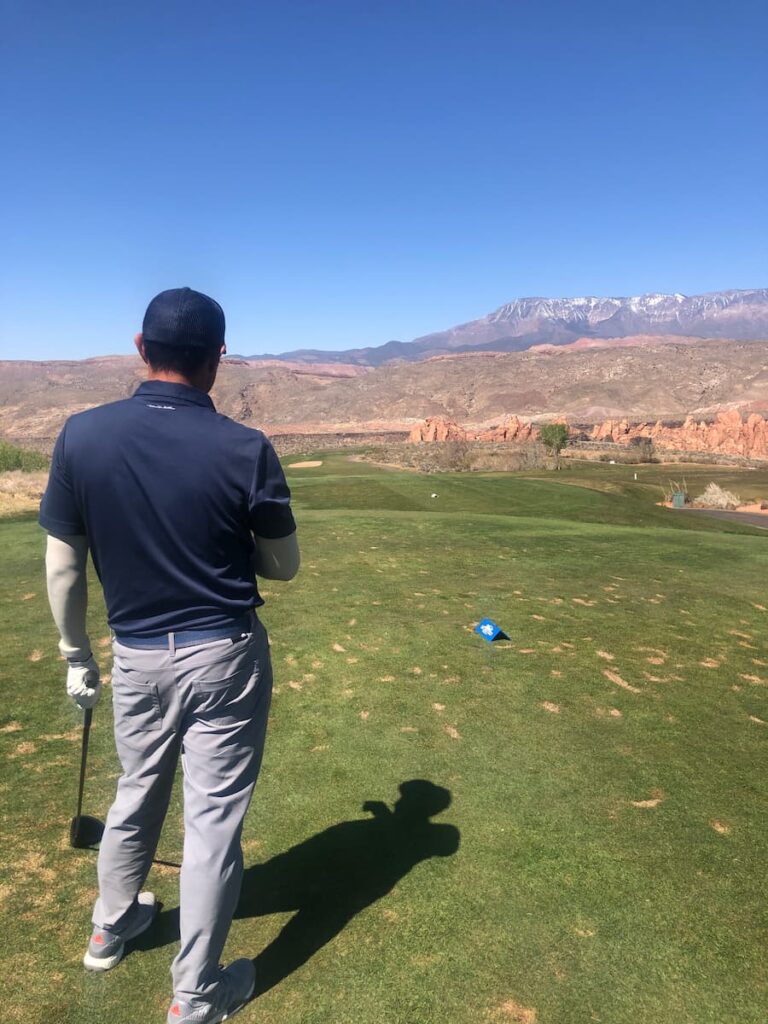Every hole starts with a tee shot where the designated tee markers are located on the teeing area at the beginning of each hole. However, situations may arise where a golfer is allowed to retake their tee shot. When playing socially, you may retake a tee shot which is called a mulligan.
However, you should not count your score officially and have it towards your handicap index. Some players like to give a mulligan or a breakfast ball only on the first tee shot of the day if you are not happy with it. In this article, we will explore the scenarios when players can opt for a do-over and the implications of such decisions.
Out of Bounds (OB)
One of the most common scenarios that permit a golfer to retake a tee shot is when the ball goes out of bounds. “Out of bounds” refers to areas outside the boundaries of the golf course, typically marked by white stakes or boundary lines or a fence. When a tee shot finds its way beyond these boundaries, the player incurs a penalty stroke and then must take another shot from the original spot.
This rule, known as the “stroke and distance” penalty, is a vital aspect of golf that ensures players stay within the confines of the course and play each hole as intended. If you are unsure if your ball stayed in bounds of the course area, you are allowed to re-hit it from the original spot as a provisional ball or a “just in case” I can not find my ball in-bounds. This will save time and not slow your group down so you don’t have to run back to hit another one. I will elaborate on this more at the end.
Lost Ball
In the sprawling landscape of a golf course, it is not uncommon for a shot to disappear from view. When a player is unable to locate their ball within the allowed time (usually three minutes) and not in the penalty area, the ball is declared lost. In such cases, the player is obligated to hit another shot from the original spot last played. This rule prevents players from benefiting from wayward shots and ensures that each stroke is accounted for during the round.
When a player is unsure of whether or not their ball is lost, many will hit a provision shot, which is a backup shot just in case they’re not able to find their ball.
Note: You should always check about a local rule at the golf course you are playing and see if some areas like native grass or fescue are being played as a penalty area even if it is not marked with red paint or stakes. Or if you hit your golf ball in the water. This would mean that you could drop two-club lengths from where it entered the penalty area and take a penalty stroke. This would save you to go back and hit from the original spot and to save time as well.
Unplayable Lie
Golf courses are diverse environments, with challenging terrains and hazards that can pose obstacles to players. Should a player find their ball in an unplayable lie, they have the option to declare it so and retake their tee shot.
This situation can occur when the ball is nestled up on tree roots, lodged in a bush, or in a precarious position within a bunker. By declaring the ball unplayable, the player incurs a one-stroke penalty and take the following three options:
Re-teeing
The player can return to the original spot played incurring a one-stroke penalty.
Dropping
The player can take a drop within two club lengths of the point where the ball lies, but no closer to the hole, again incurring a one-stroke penalty.
Line of Play
The player can drop the ball along a line drawn from the hole through the point where the ball lay, with no limit to the distance behind the ball. This option also comes with a one-stroke penalty.
The Provisional Tee Shot
Occasionally, golf courses may implement specific local rules to adapt to unique circumstances or conditions on their grounds. One such example is the provision for a “provisional tee shot.” This rule allows players to hit an additional tee shot if they suspect their original tee shot might be lost outside a penalty area or out of bounds. The provisional shot acts as a safety net; if the original ball is found playable, the provisional shot is abandoned. The player must also declare that the next shot is a Provisional Ball to the other players.
However, if the original ball is indeed lost or out of bounds, the player continues with the provisional ball, incurring a penalty stroke. Stipulated local rules are essential for maintaining a fair and enjoyable game, particularly in scenarios where standard rules might not suffice.
Conclusion
The rules surrounding when a golfer can retake a tee shot are vital for maintaining fairness and integrity in the game. Out of bounds, lost balls, and unplayable lies all present challenges that can lead to additional strokes and, at times, frustration. Understanding these rules not only ensures adherence to the game’s traditions but also emphasizes the significance of accuracy, decision-making, and adaptability on the golf course.
As players strive to improve their skills, they should approach each tee shot with a combination of skill and caution, remembering that even the best golfers may occasionally need a second chance from the tee. By embracing the rules and learning from each experience, golfers can appreciate the beauty of the game and continually work toward mastery, knowing that each tee shot is a fresh opportunity to succeed.


